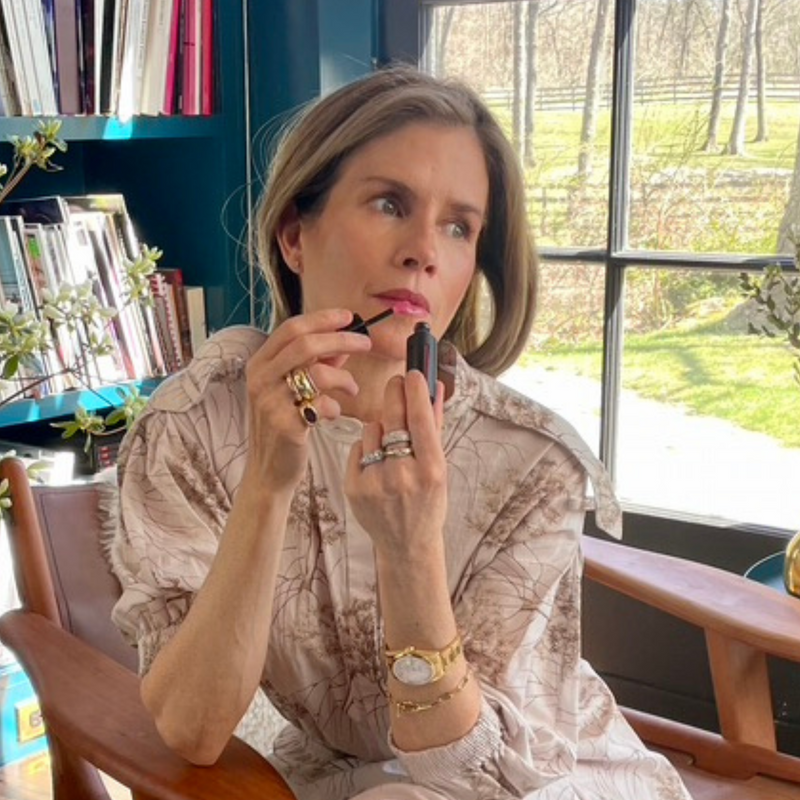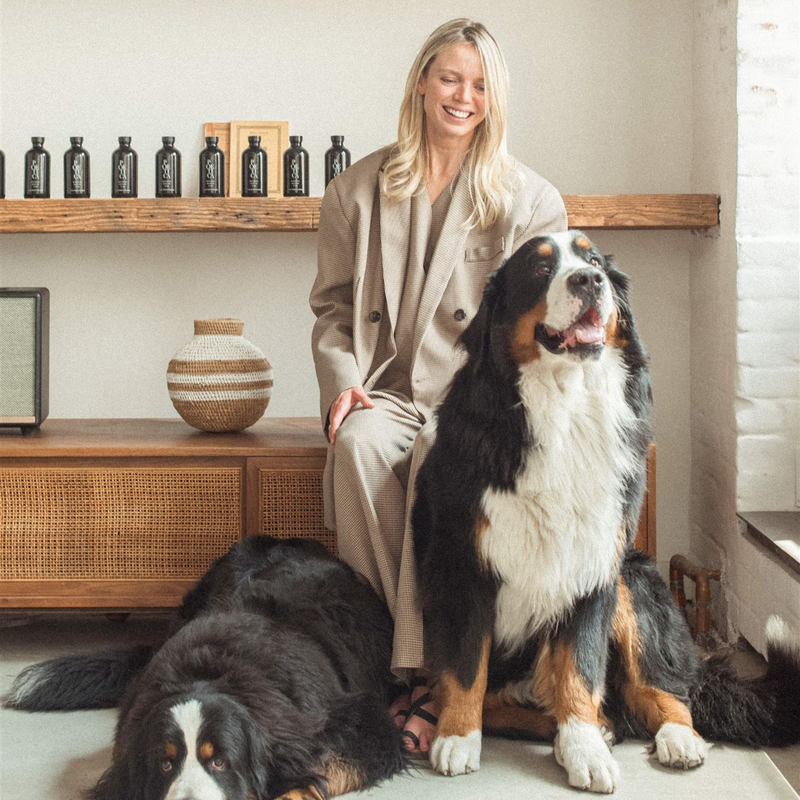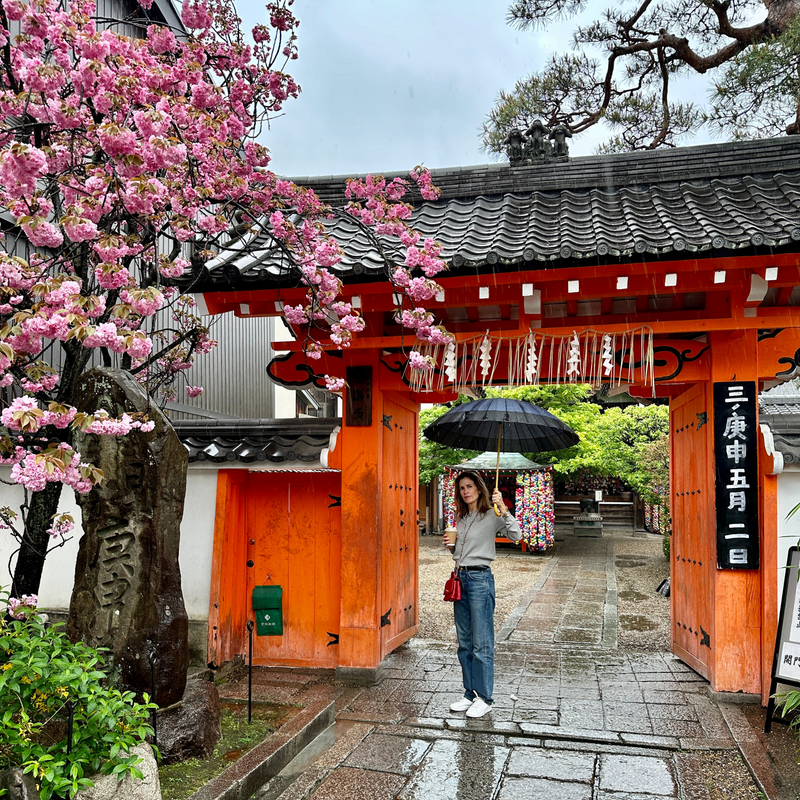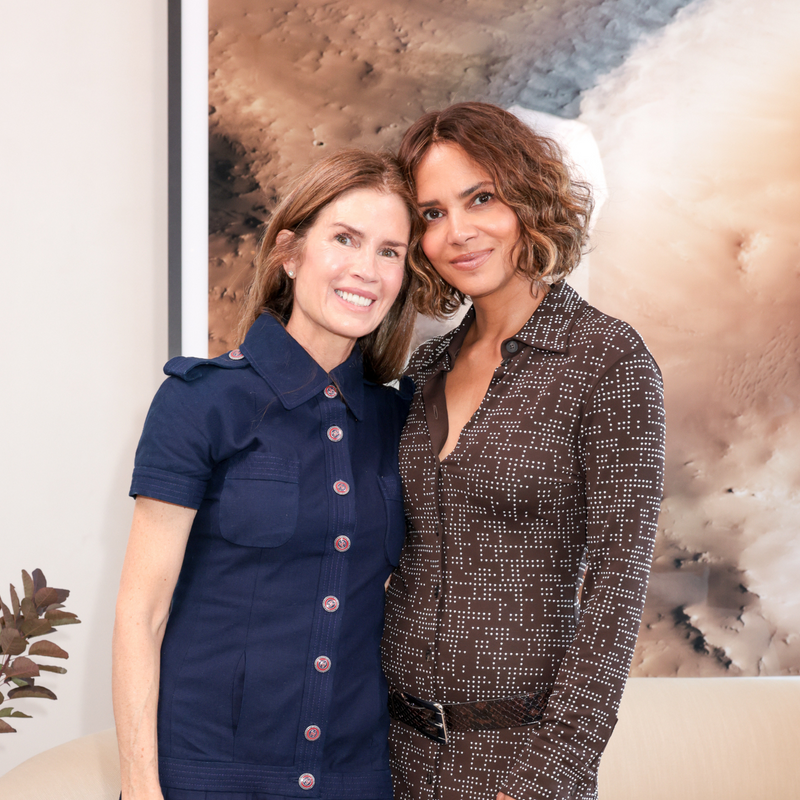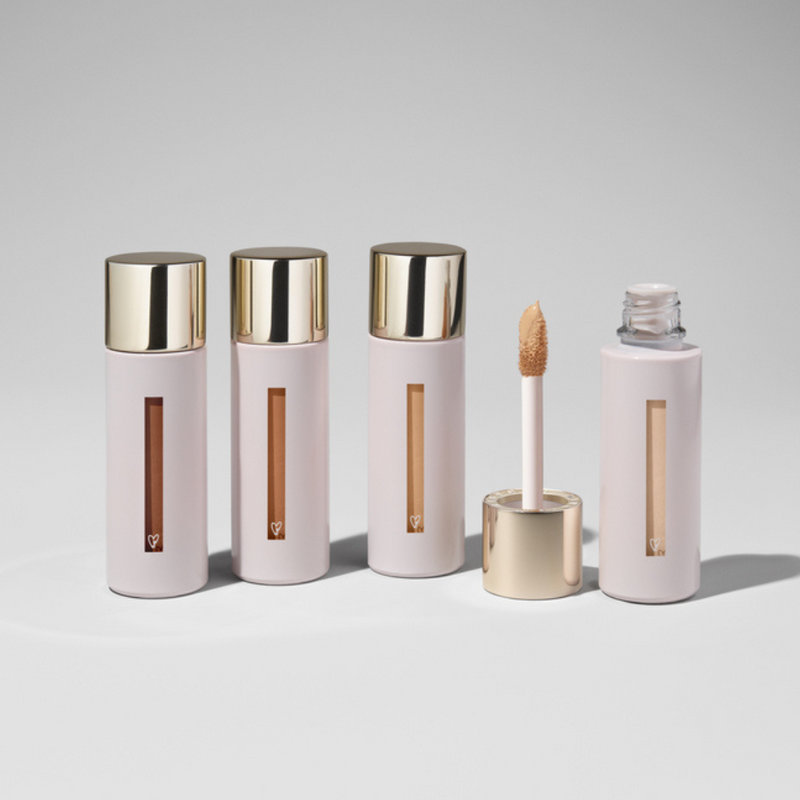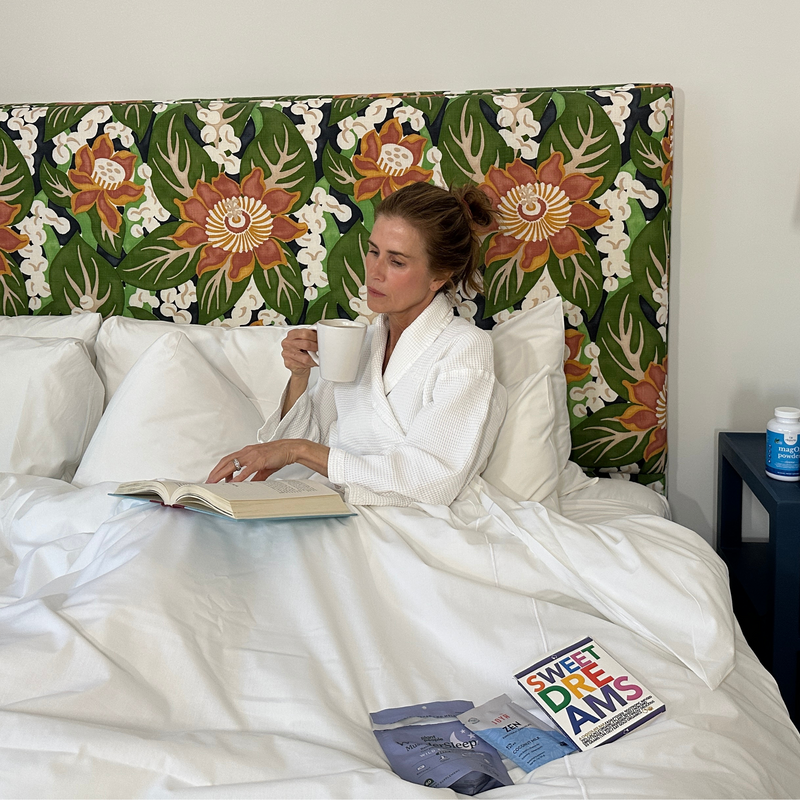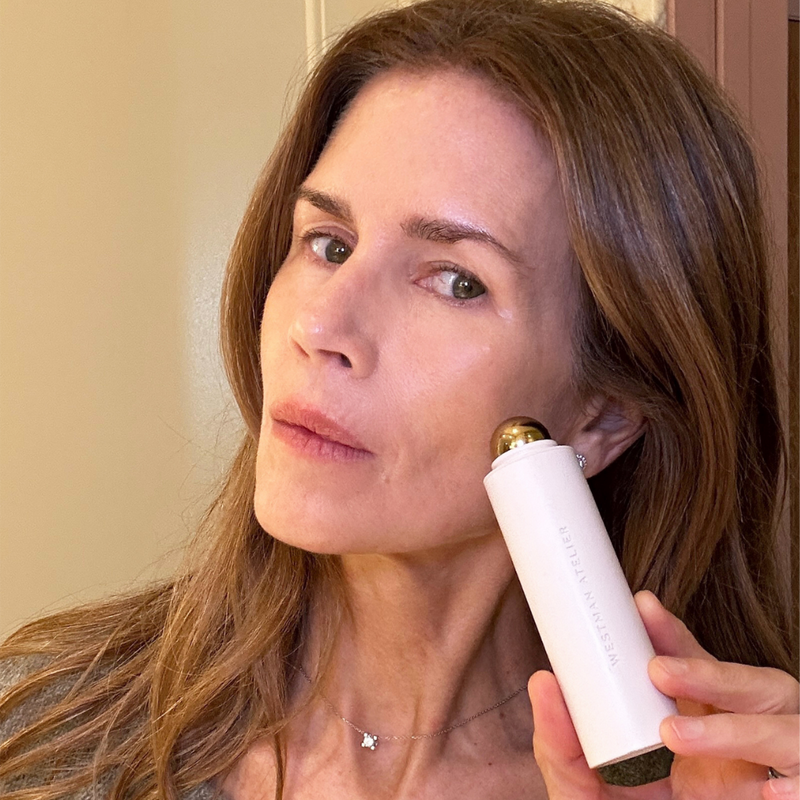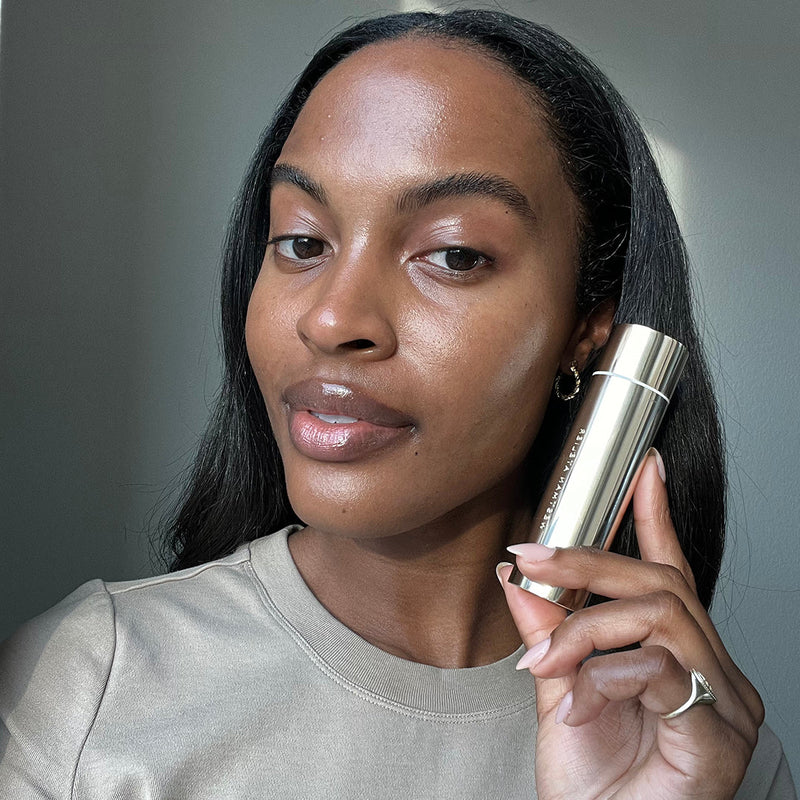Brooklyn-based ceramicist Dina Nur Satti has six unopened makeup brushes in her apartment. “I tend to like sculpting makeup with my hands,” she says, likening the finger-blending of smoky eyeliners and creamy foundations to hand-building with clay.
Makeup is surprisingly connected to Nur Satti’s artistic practice. She rarely enters her studio with a bare face. “I’m trying to capture a feeling in my work, so I will change the way I dress, the jewelry I’m wearing, or my makeup— like a little kohl or blush— to evoke a feeling in the studio.”
The ritual of transformation is integral to her totemic vessels. Rising in tiered eaves and deep curves, they explore communal practices of her East African lineage. Nur Satti was born in Chad to a Sudanese father and Somali mother and raised between Paris and Nairobi. It was her paternal grandmother who introduced her to the mystic powers of fragrance, eyeliner, and self-care.
Pausing work on three forthcoming shows in Paris, Abu Dhabi, and Qatar, Nur Satti shares the products and treatments that feel like magic and smell like history.

Your Sudanese and Somali heritage are foundational aspects of your sculpture. Does this lineage cross over into your self-care routine?
Both cultures are very rooted in feminine self-care. In Sudan, there’s a tradition passed down over generations of making Dilka body scrubs with sorghum and smoked resin, as well as frankincense, clove, and other organic spices. These ingredients exfoliate and smooth the skin, leaving behind a smoky scent. My grandmother always smelled like this, and I loved it. I know the basics, but I haven’t made my own yet. I’m going to London in a few weeks, and my friend and I are going to test out making it.
What inspired your signature beauty look–a slim line of black kohl on the eyes?
In East and South Africa, they burn fruit husks and other materials to make kohl eyeliner that they keep in gold vials and apply with a little dipping stick. I grew up watching my grandmother apply kohl in her waterline every day. It’s not something you put on for the outside world, it’s something for your own self-care. There’s an aspect of [safeguarding]—they believe the evil eye can enter through the eyes and the kohl acts as protection.
Do you make your own kohl?
I wish! I’ve converted to a kohl pencil. I just picked up a deep brown eyeliner in London. I apply it in the waterline from the inner corner to the outer edge, then I use my fingers to pull it out to make a soft smokiness on my outer eye. There’s something romantic about the way it blends. Sometimes, when the mascara is really good, you don’t even need kohl. I love the Westman Atelier mascara. It’s so light and evenly coats the lashes without making them heavy or clumpy, even if I go over them many times.
Well that and you have great eyebrows.
I’ve been getting into a brow. My mom always told me not to pluck them, so I’ve figured out how to sculpt them with a Chanel brow gel to fake different shapes. In Iranian animations, the shapes of eyebrows are so stunning and long. For a longer eyebrow, I realized I could cheat a little bit by filling in the front of my eyebrows with a thinner, angled-tip pencil. I lift the outer corners to open up the face, so I look brighter.
What do you do for your skin?
I like to spot treat blemishes on my cheeks and to balance out shadows around my eyes and the hyperpigmentation around my mouth with the Westman Atelier Foundation Stick. On my cheeks, I love the way cream blush feels like it might be good for your skin. I like to apply it on the sides of my face and bring it in a little bit [along the cheekbone], as opposed to putting it right on the cheeks. I usually use a dark almost brick color, though Westman Atelier recently introduced me to a blush that’s the color of jam. It seemed so pink at first. I was surprised it worked on my skin tone! To contour, Face Trace is really gorgeous. I apply it right under my cheeks, from the outer corner to the sides of my mouth.

Do you ever do a lip?
I have two-toned lips—something that was one of my biggest insecurities growing up and is now a trend. I usually reach for lipstick that matches one of my two tones—either something the color of my darker top lip or my lighter bottom lip. Chanel’s [Rouge Allure] lipstick almost feels like you’re putting on a balm but it’s very pigmented. The shade called Alter Ego is such a good neutral with a little rose in it. I take that with me if I’m going out. Lipstick, perfume, maybe a bit of blush.
You bring your perfume with you when you go out?
Perfume is very much a love language in our culture. You gift it to people all the time. We make our own Khumra perfumes. Everything has to be very high quality. I buy pure sandalwood—it’s almost citrus-y—in big batches whenever I go to the Middle East through Noon, their delivery service for everything. You can order it online in the US, but it’s four times the price. Essence of Sudan makes the most beautiful Oud perfume balm based on a Sudanese recipe. When I smelled her incense, I was blown away. For summer, I love a clean musk. My friend gifted me one that’s very light on the nose. I apply perfumes to my wrists, behind the ears, and on the neck. I’ll do a little on my hands for a quick sweep on my clothes, and even my hair.

Are the oils part of your hair care, or are they just for fragrance?
A lot of women make their own hair oils in East Africa with things like jojoba oil, olive oil, and almond oil. I make mine with avocado, olive, almond, jojoba, and coconut. In the winter, that’s how I take care of my curly hair. I wash it once a week. Then after the shower, I put in the oil, slick it back, and put it in a loose braid for the studio. Two or three times per week, I mist my hair with water and add a little bit more oil. As a nourishing treatment, once in a while, I use Kar Kar oil.
Otherwise, to keep my hair healthy, I get my hair cut by my friend, Kayla Jo. She is incredible with curls. She is trained in dusting, a technique where you twist each curl strand and just cut whatever’s fraying. It trims your hair while retaining length and giving it shape. When I have an event, I see Renée Gadar at Paul Fox Salon in the Flatiron. She’s really good at using the flatiron to make a wave and give my hair a little volume.
What other treatments feel like meaningful maintenance?
I work with my body a lot, so I need to get constant massages and acupuncture. I have a membership at SAI in Brooklyn—they have an incredible lineup of masseuses. I really enjoy reiki and spinal energetics, which regulates your nervous system but looks completely insane. And I go to breathwork sessions. Nadia Josse at Live the Process in Tribeca is unbelievable. I felt like my nervous system stabilized.
The way I make my ceramics involves attending different ceremonies to research how people use objects in rituals to affect different states of consciousness. Making ceramics that way is a spiritual relationship. Your energy transfers to the clay. Sometimes I need to upgrade emotionally and spiritually before I can make that kind of work. If you have cobwebs, it can’t come through. Body and energy work open those channels.
Come inside Dina Nur Satti’s Brooklyn studio for a look at her face-sculpting ritual and her creative process.


